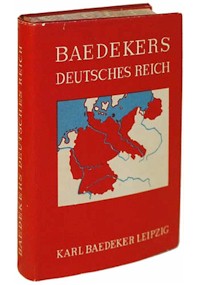

| Home |
| News |
| Editions |
| Baedekeriana |
| Auctions |
| Collecting |
| Reference |
| Shop (beta) |
Bindings and dustjackets
All pictures on this page courtesy of Bernard J. Shapero Rare Books.
Bindings
| This is an example of a book in "Biedermeier boards" - these were used in the 1830's and early 40's. | 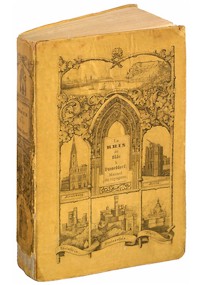 | |
| Here are two fairly typical "old-style" bindings - books from 1850 to the mid-1870's had varying typefaces but were in red with gold printing, just as the later editions. | 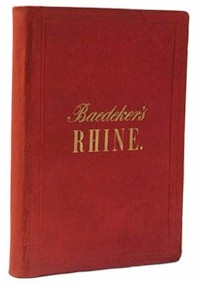 |
 |
| From the late 1870's, the "classical" Baedeker binding appears, with the characteristic typeface and impressed bands on the cover. However, whereas the English editions and some German editions we have seen have the name of the firm in italic, most French and German editions use an upright font. Note also the different forms for the name of the firm in this context: "Baedekers" in German, "Baedeker's" in English and "Baedeker" in French. | 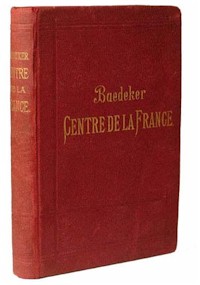 |
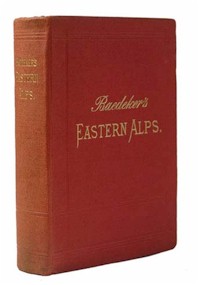 |
| The left picture shows the "pink cloth" binding used for some books issued in 1889. Otherwise, books generally only ever appeared in red, although to the right, you can see an unusual variation on some books in the 1920's - a two-tone binding. |  |
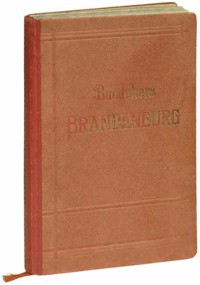 |
| Here is an example of the coarse-grained cloth used for some editions in the 1930's. |  | |
| A very few editions were also presented in a "cassette" or slipcase with sections of the guide separately bound. |  |
 |
| Finally, something very rare - a Baedeker paperback. This edition - the "kleine Ausgabe" of Berlin and Potsdam - was only published in paperback, but some others (for instance Thüringen 3 (1935)) can appear both in standard cover and in paperback. |  | |
Dustjackets
The books themselves - The contents - What to look for - BDKR condition - Pricing


bdkr.com P.O.Box 119 Cranbrook Kent TN18 5WB United Kingdom

